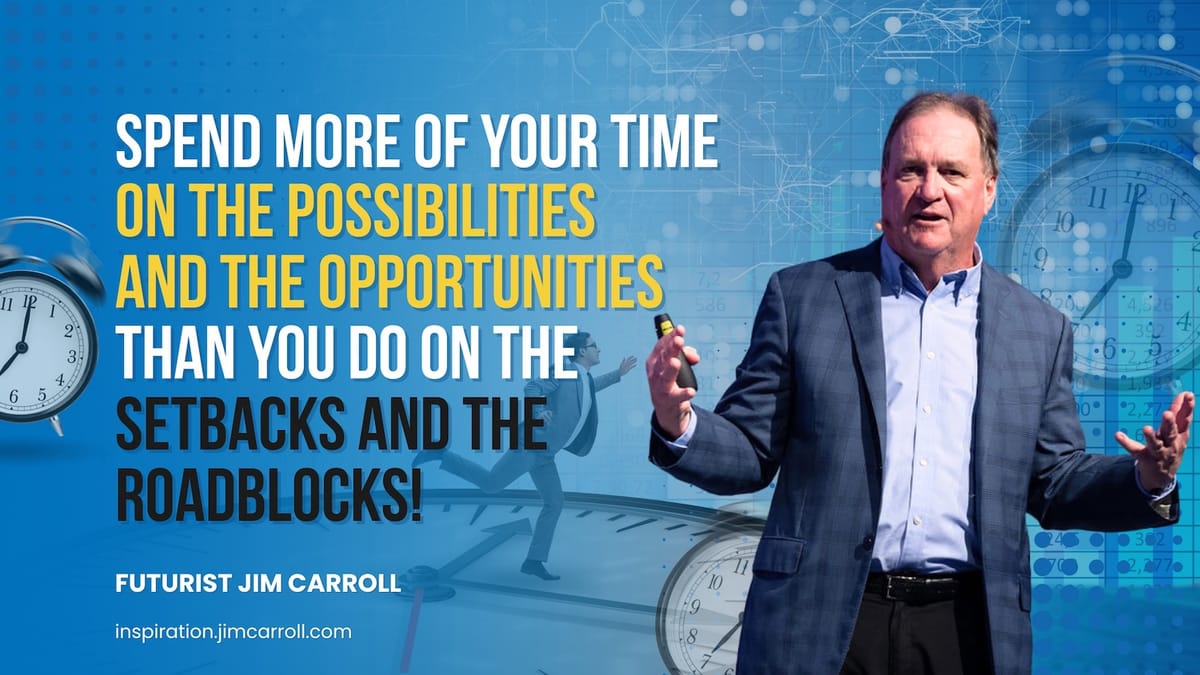"Spend more of your time on the possibilities and the opportunities than you do on the setbacks and the roadblocks! - Futurist Jim Carroll
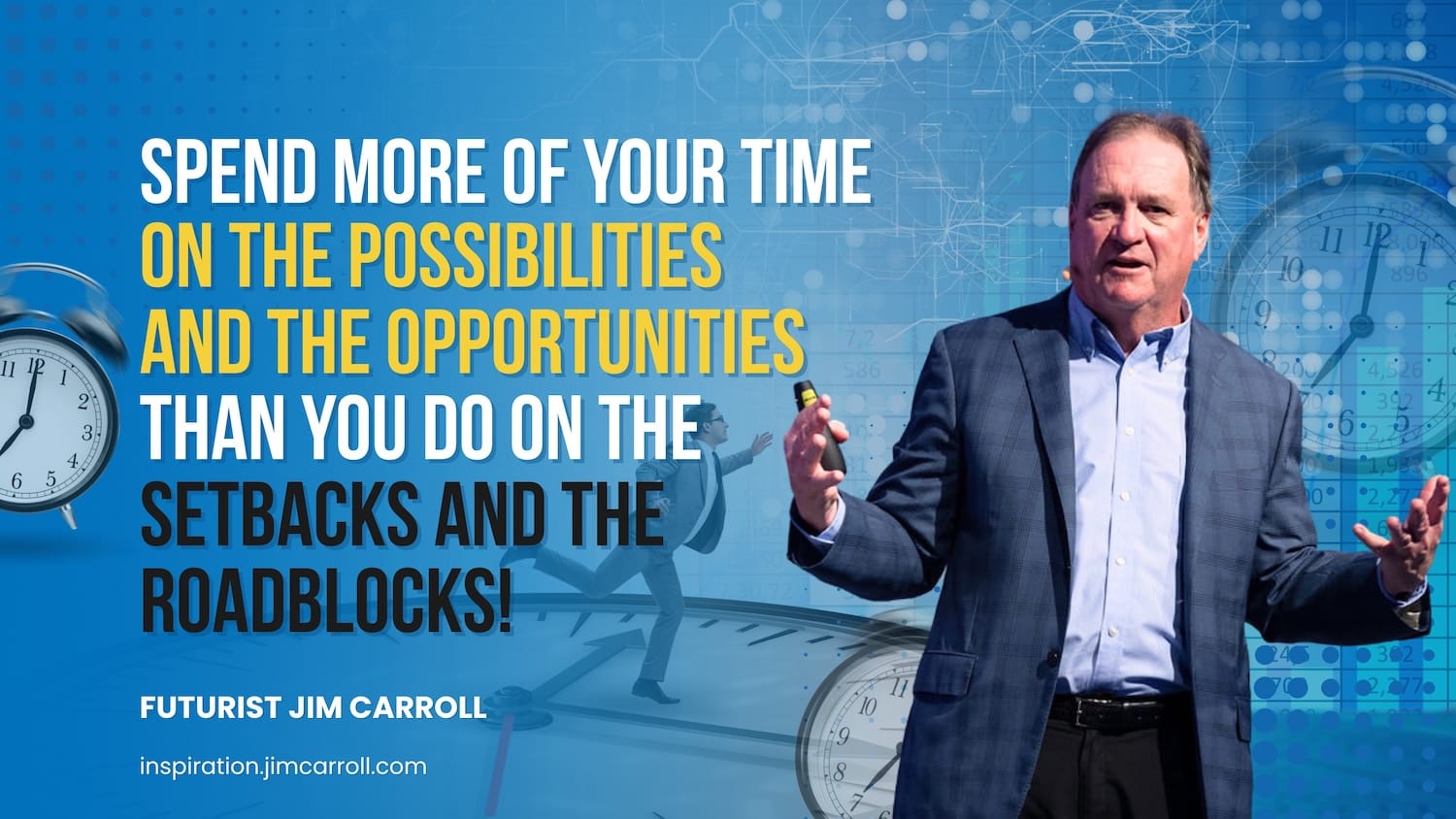
My post on 'mindsets' yesterday resonated with some folks - and a few asked me how we can be in a better frame of mind to adapt such mindsets, given all the negativity out there.
That got me thinking, and I came to the idea that we can best do that by focusing on opportunities and possibilities- and less time on the roadblocks that are in the way, or the setbacks we encounter along the way! With that in mind, I worked with Gemini to come up with some mindsets that fit that theme - by feeding it the several thousand blog posts that I've written since 2002. And here's what it came with - an actually kind of magical list. Then I used Gamma to build some slides for it. Also magical!
Why is the issue of a possibility-oriented mindset important? Think of this way - a mindset is the mental equivalent of keeping your eyes on the road ahead, not fixed on the rearview mirror. This doesn't mean you ignore that you hit a pothole; instead, you remain more focused on your destination and the open road that is in front of you. It is about allowing your future goals to pull you forward rather than letting past mistakes drag you back.
Having a mindset that is focused on opportunity - not barriers - is one of the most important things you can do to define your future, which was the idea behind yesterday's post.
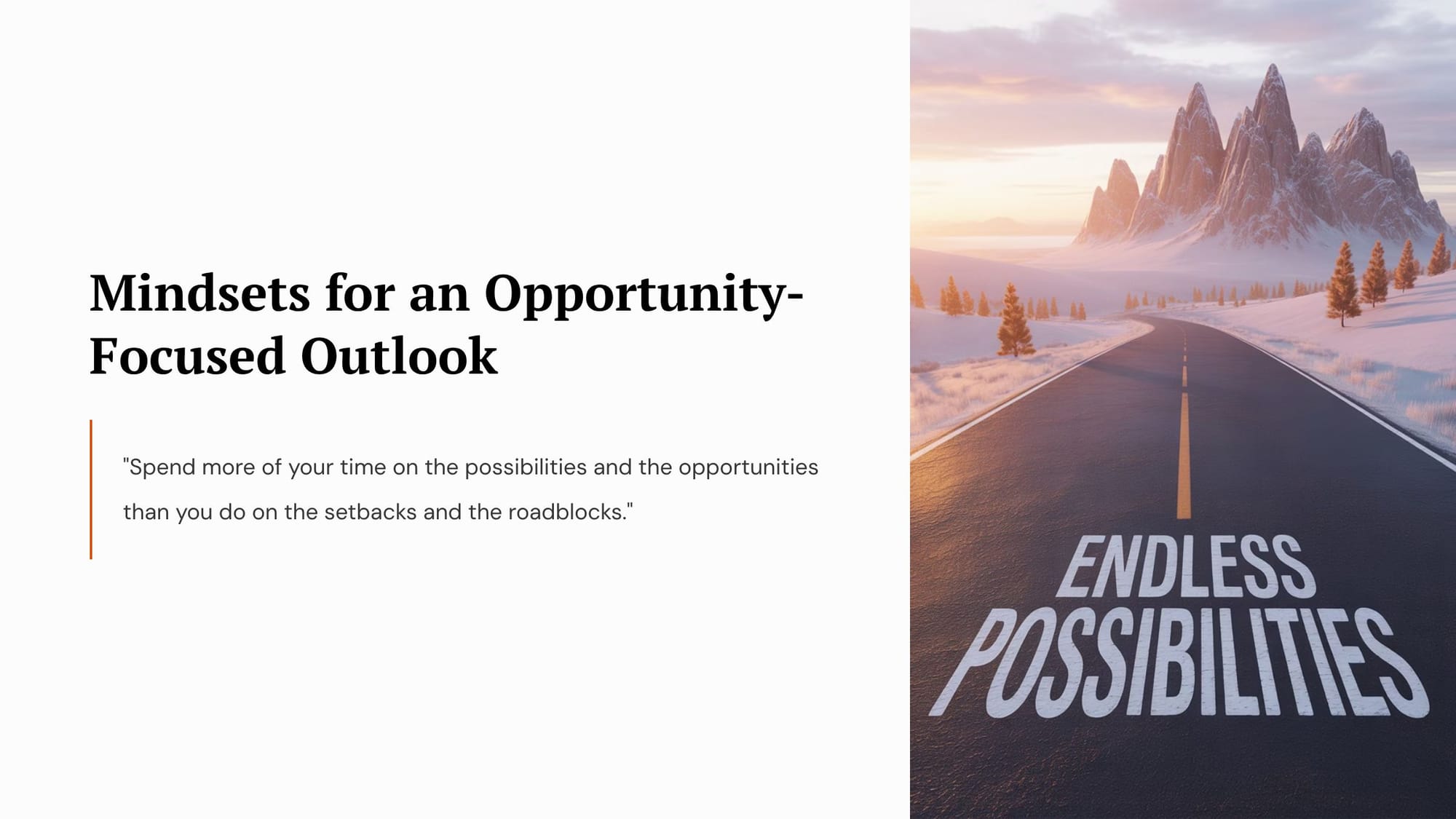
Knowing that, you should also know that there are a few types of forward-oriented mindsets.
The "Possibility-First" Mindset
This is all about seeing EVERYTHING as a possibility. EVERYTHING.
How do you do this? When you encounter a new situation, your first thought is, "What could this become?" rather than, "What's wrong here?". This is similar to looking at a vacant lot and seeing the potential for a community garden or a playground, not just a space. This mindset includes:
- Creative Vision: See potential where others see problems.
- Generative Approach: Prioritize potential over obstacles.
- Future Focus: Transform challenges into opportunities.
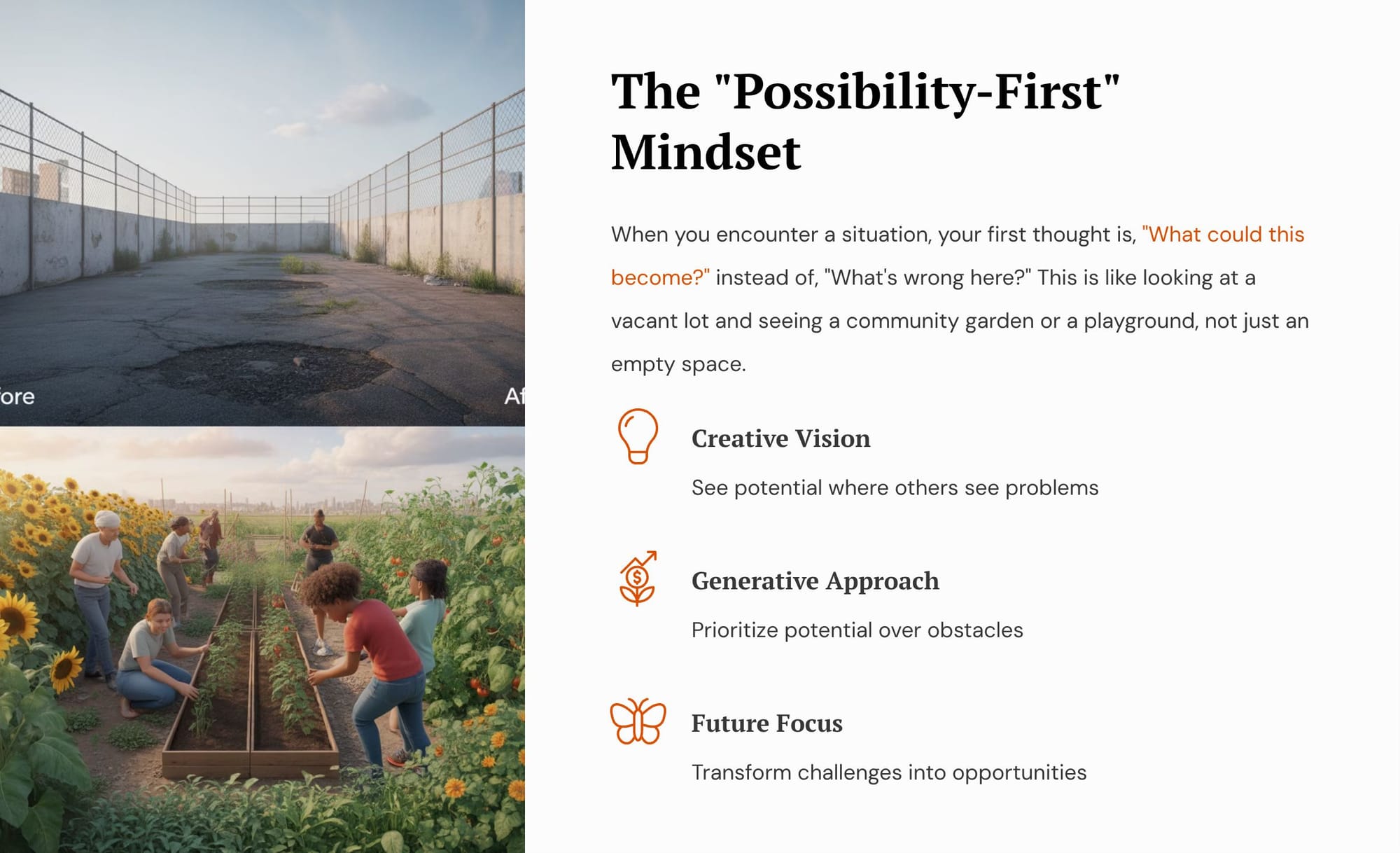
The "Growth-Through-Grit" Mindset
Bounce back! Recover from failure! Learn from mistakes!
This mindset reframes setbacks as a necessary part of the process. Think of it as a workout for your resilience muscles. You understand that overcoming challenges is precisely what builds your strength and capability. This process involves:
- Facing the Challenge: Acknowledge the roadblock without fear.
- Building Resilience: Use obstacles to strengthen your capabilities.
- Emerging Stronger: View roadblocks as opportunities to grow.
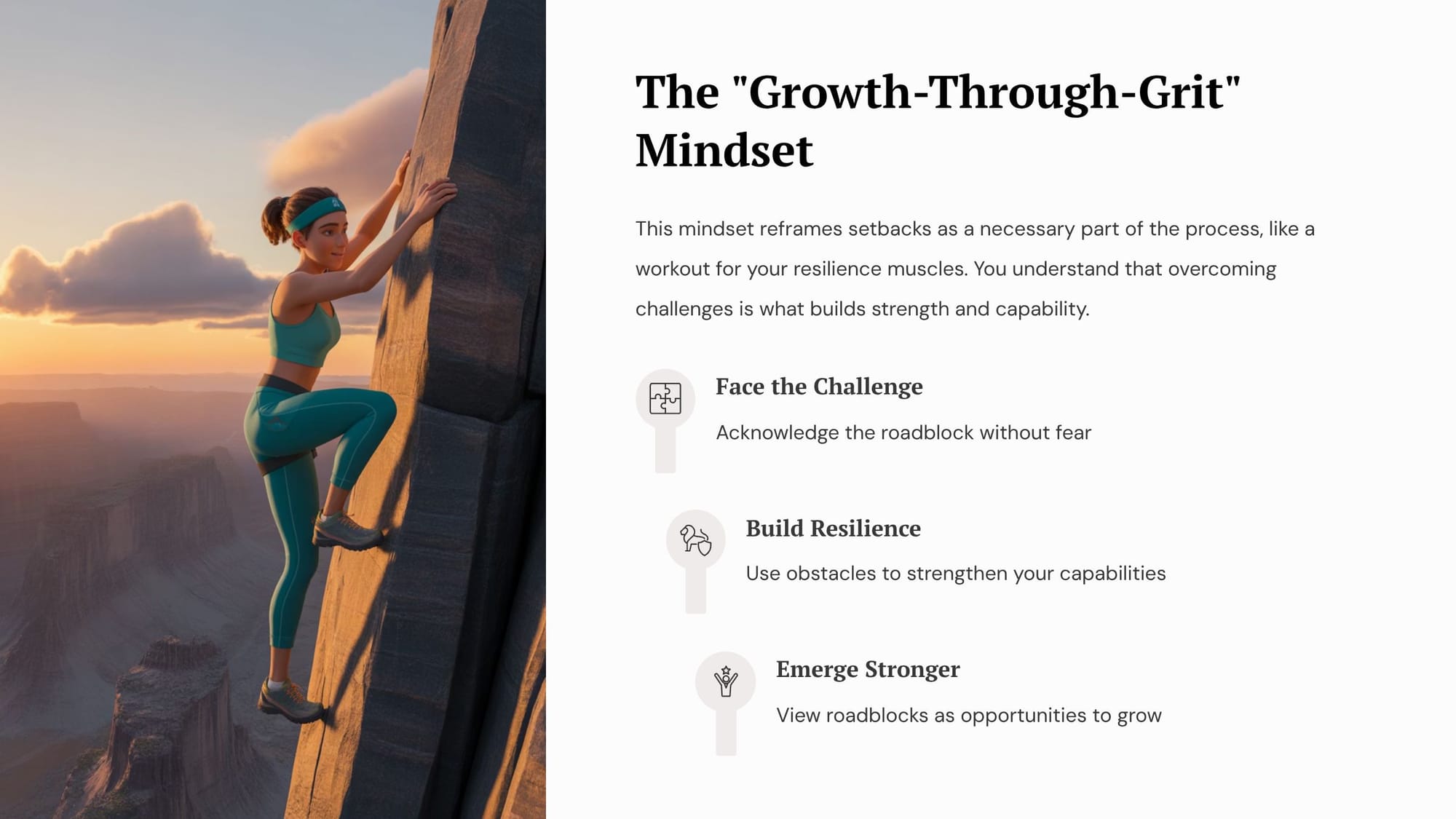
The "Solution-Oriented" Mindset
Always find a way out. Find a path. Get through the difficulties!
This mindset is relentlessly practical. While you acknowledge that a problem exists, you do not dwell on it. Instead, you immediately pivot to asking key questions:
- "What are our options?"
- "What's the next logical step?"
- "How can we move forward?"
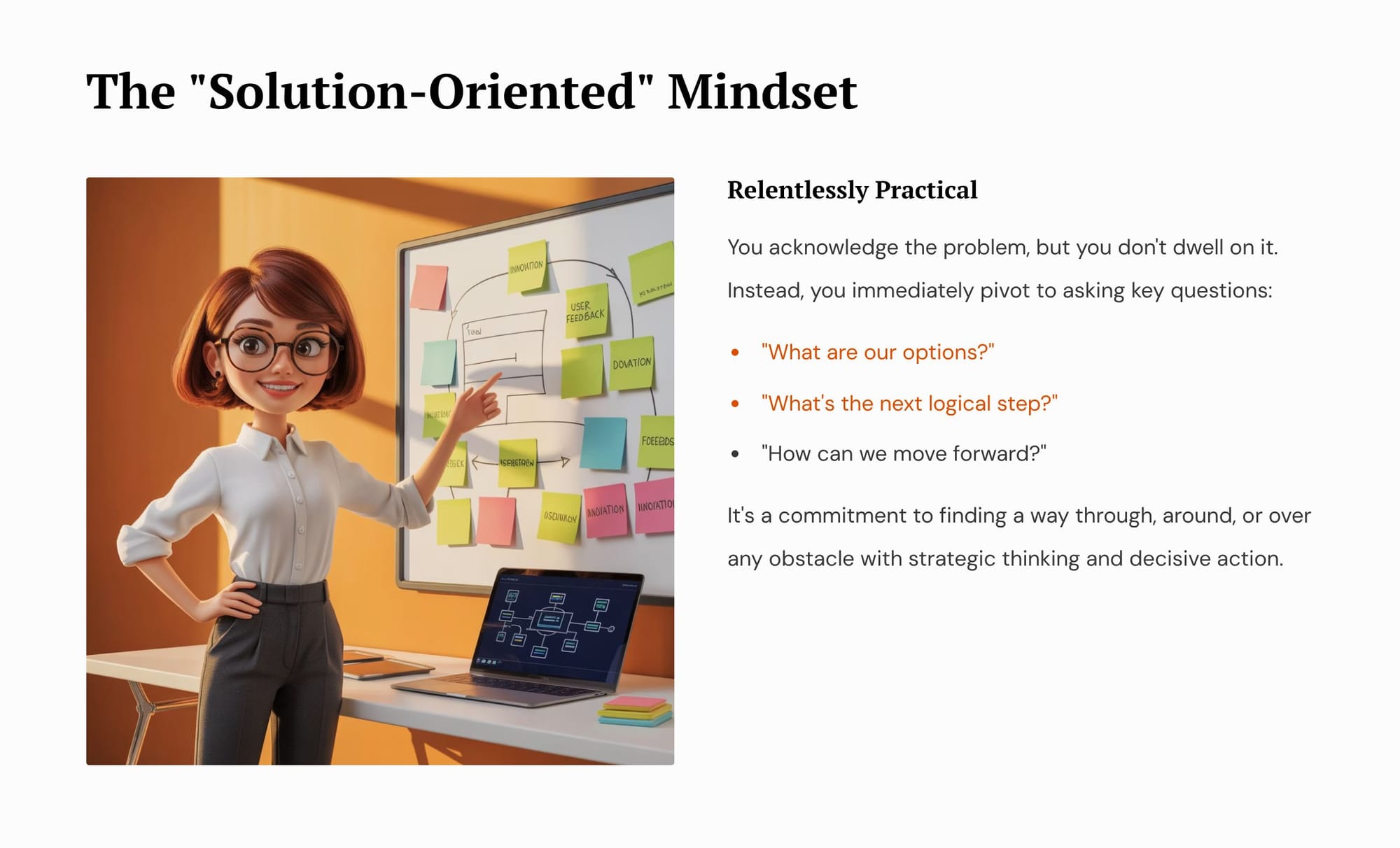
The "Detached Observer" Mindset
When you hit a roadblock, this mindset allows you to take a step back. You look at the situation without emotional attachment. This emotional distance is your superpower for clear thinking. The process involves:
- Step Back: Create emotional distance from the problem.
- Analyze Clearly: View the situation objectively and without frustration.
- See Solutions: Discover options you might have missed when you were upset.
Doing this will help you push through and get around the barriers.
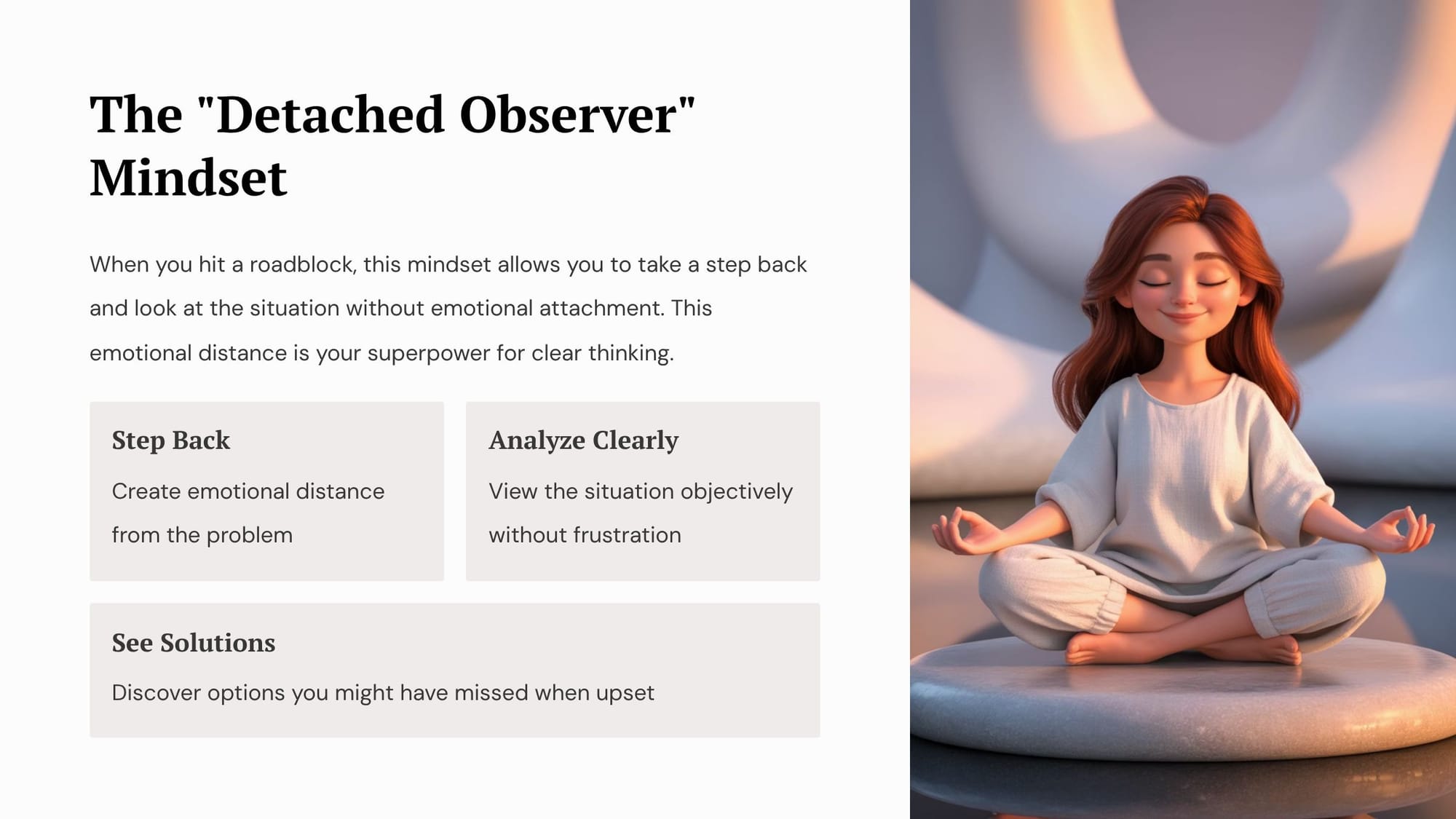
The "Resourceful Innovator" Mindset
This one is the most important, particularly at times like these. It's because it puts you into a frame of mind in which you just ... figure things out.
This mindset is rooted in the belief that you either have the resources or can find them to overcome any setback. It is a mindset of creative problem-solving. You look at what you do have, not at what you lack. The key principle is to find innovative ways to use your existing resources to your advantage, which turns limitations into creative catalysts.
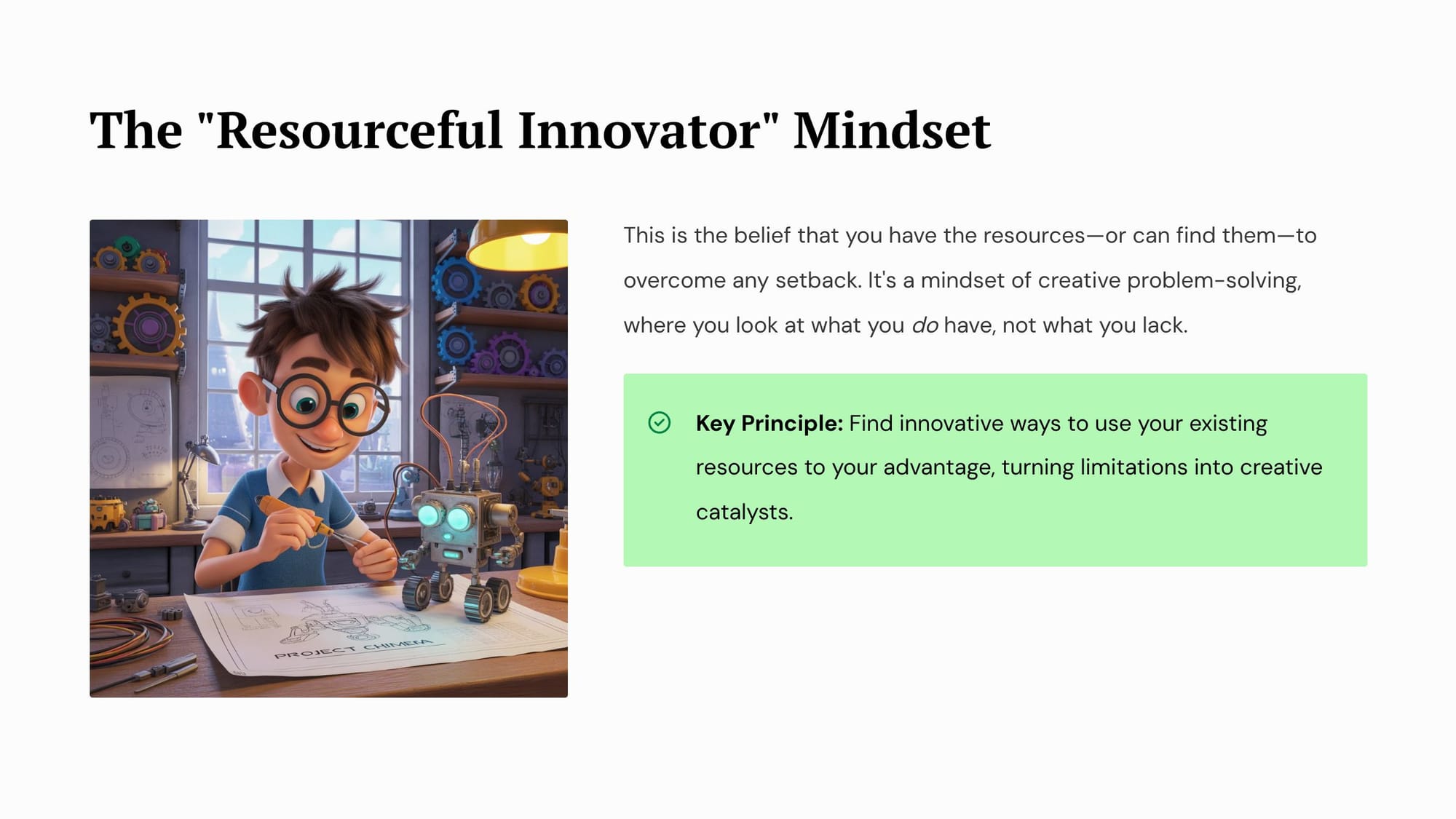
The "Calculated Optimist" Mindset
Optimism, always. Like I've often said on stage, "As a futurist, I can't tell you your future will suck! I wouldn't get a lot of repeat bookings!" I have to force myself to be optimistic.
In that vein, this is not the same as blind positivity; it is a strategic choice. You choose to focus on the most favorable outcomes while still being aware of the risks. You acknowledge the roadblocks, but you strategically choose to invest your energy in the paths that have the highest potential for success. This involves:
- Acknowledge Risks: Stay realistic about challenges.
- Strategic Focus: Invest energy in high-potential paths.
- Favorable Outcomes: Choose optimism as a strategic advantage.
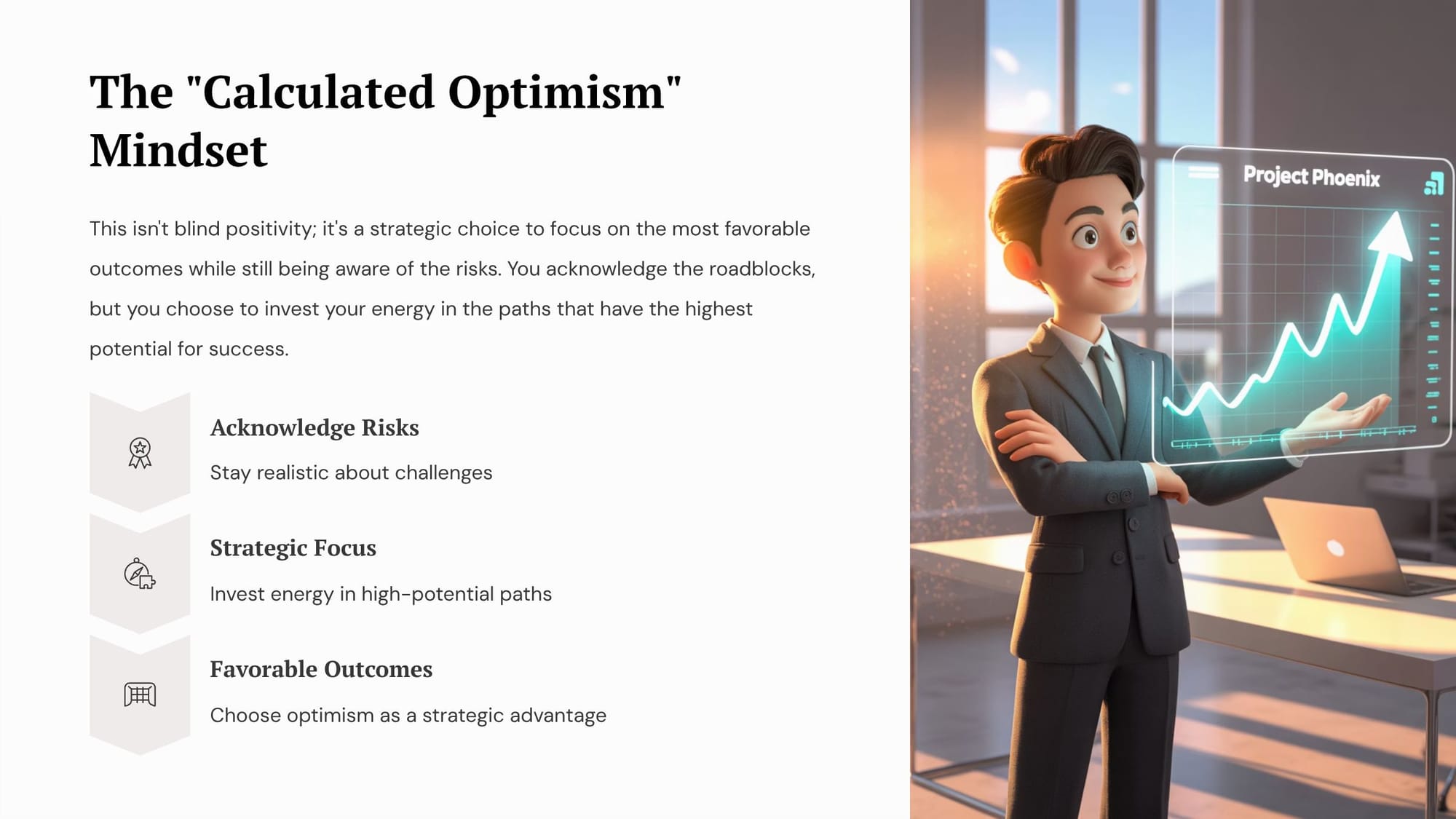
Mindset matters!
These seven mindsets work together to create a powerful framework for opportunity-focused thinking. By adopting these mental approaches, you shift from being reactive to proactive, and from being problem-focused to solution-oriented.
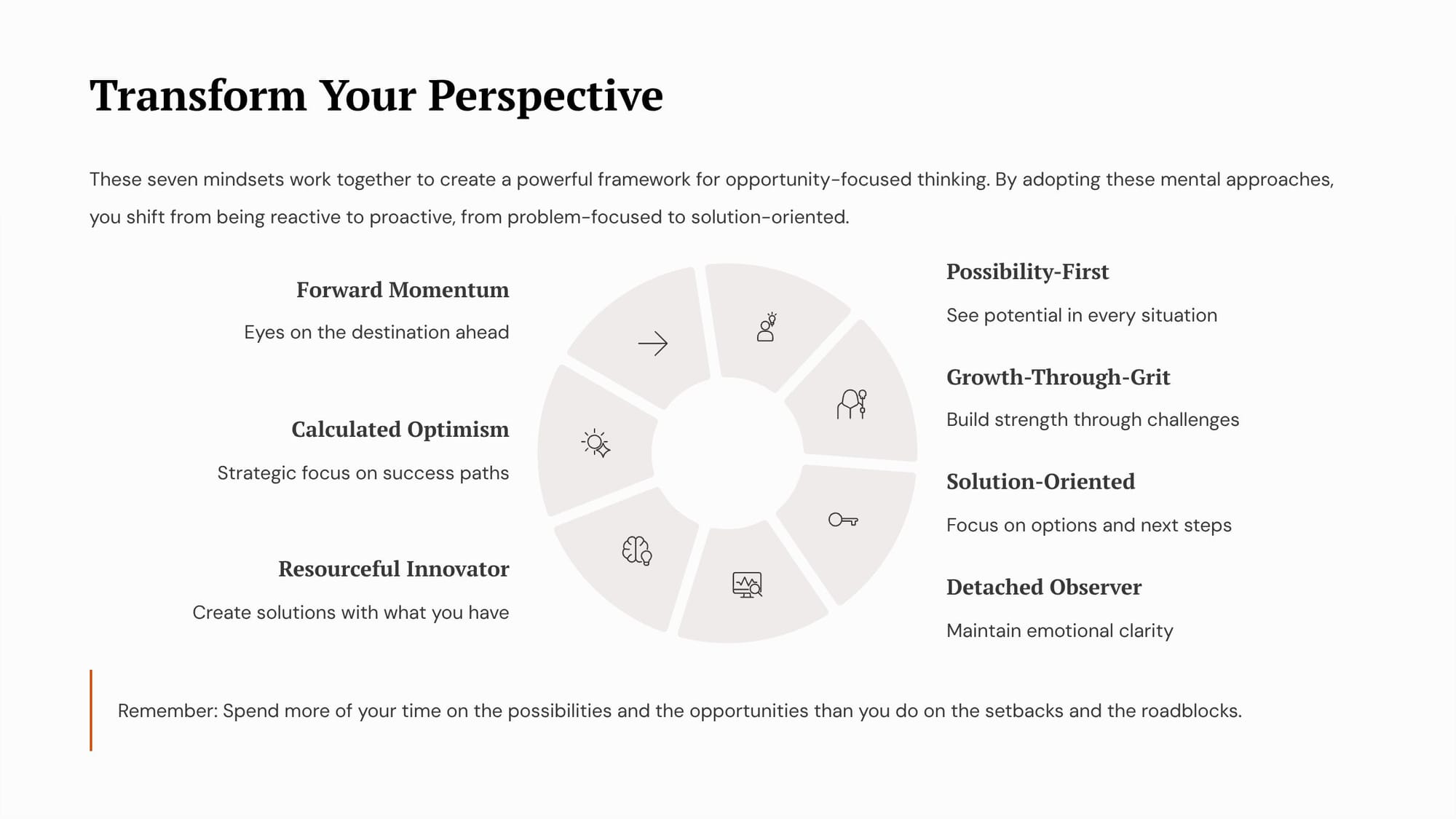
Remember: Spend more of your time on the possibilities and the opportunities than you do on the setbacks and the roadblocks!
When it comes right down to it, Futurist Jim Carroll doesn't believe that our future sucks - because we can turn it into something that want it to be!

